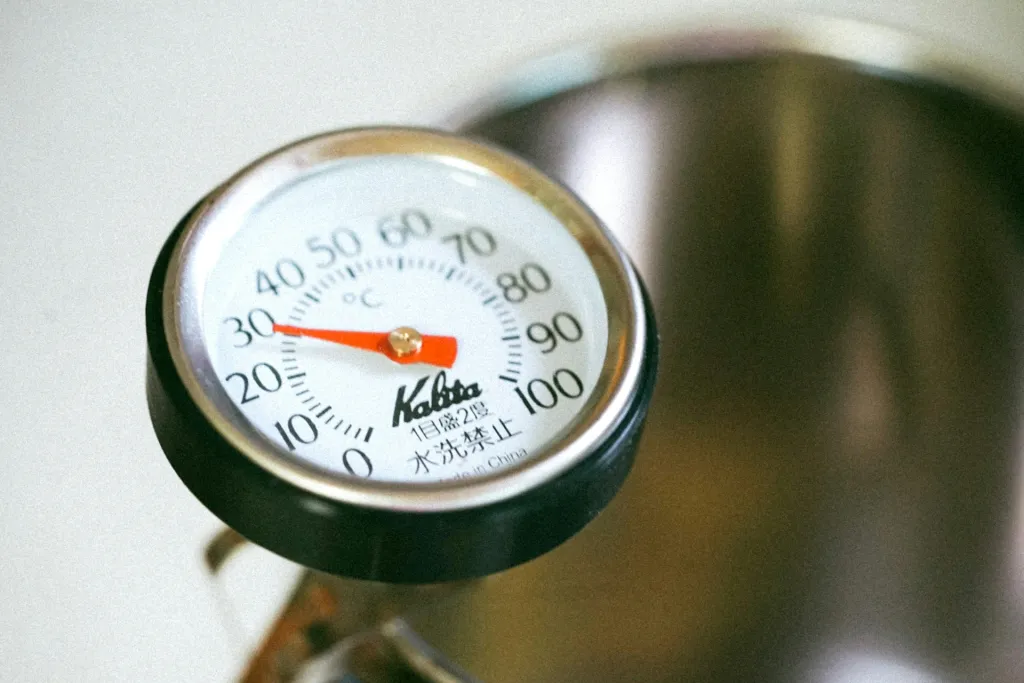
In order for yeast to cause your dough to rise, it needs to be at the right temperature. This is called “proofing,” which lets you know if the yeast is active. You can do this if you are unsure if your yeast is still alive, but if I am sure of the yeast I am using, I skip this part.
To proof the yeast, add one packet of active dry yeast to 1/4 cup of warm water. The water should be between 105 and 110 degrees Fahrenheit. Add a teaspoon of sugar and let it sit for about five minutes. If it foams up and smells bready, it’s good to go. In fact, the water you use when making your pizza should be at this temperature for best results.
What do you do if you don’t have a cooking thermometer handy? Just learn to tell the right temperature by touch. After a few tries, you’ll be a pro. The water should feel like a nice warm shower. I rarely use a thermometer. I just run the water over my hand and make it warmer until it feels warm, but not hot.
Hot water can kill your yeast, so avoid getting it too warm. Once you’ve done it a few times, you’ll have an instinct that tells you when it is just right.
-
Mastering Pizza: The Art and Practice of Handmade Pizza, Focaccia, and Calzone [...
-
The Pizza Bible: The World's Favorite Pizza Styles, from Neapolitan, Deep-D...
-
Flour Water Salt Yeast: The Fundamentals of Artisan Bread and Pizza [A Cookbook]...
-
Pizza: The Ultimate Cookbook Featuring More Than 300 Recipes (Italian Cooking, N...
-
Pizza: History, recipes, stories, people, places, love
-
Modernist Pizza
-
The Joy of Pizza: Everything You Need to Know
-
Perfect Pan Pizza: Square Pies to Make at Home, from Roman, Sicilian, and Detroi...
-
PizzaPedia: Favorite Recipes from Across America (Fox Chapel Publishing) Pizza C...
-
The Homemade Pizza Cookbook Bible: 1000 Days of Authentic Recipes to Make at Hom...

![Mastering Pizza: The Art and Practice of Handmade Pizza, Focaccia, and Calzone [A Cookbook] Mastering Pizza: The Art and Practice of Handmade Pizza, Focaccia, and Calzone [A Cookbook]](https://m.media-amazon.com/images/I/61s+vTX2a4L._SL500_.jpg)

![Flour Water Salt Yeast: The Fundamentals of Artisan Bread and Pizza [A Cookbook] Flour Water Salt Yeast: The Fundamentals of Artisan Bread and Pizza [A Cookbook]](https://m.media-amazon.com/images/I/51u9oR5Yr4L._SL500_.jpg)




![Perfect Pan Pizza: Square Pies to Make at Home, from Roman, Sicilian, and Detroit, to Grandma Pies and Focaccia [A Cookbook] Perfect Pan Pizza: Square Pies to Make at Home, from Roman, Sicilian, and Detroit, to Grandma Pies and Focaccia [A Cookbook]](https://m.media-amazon.com/images/I/519IRk1kQnL._SL500_.jpg)

